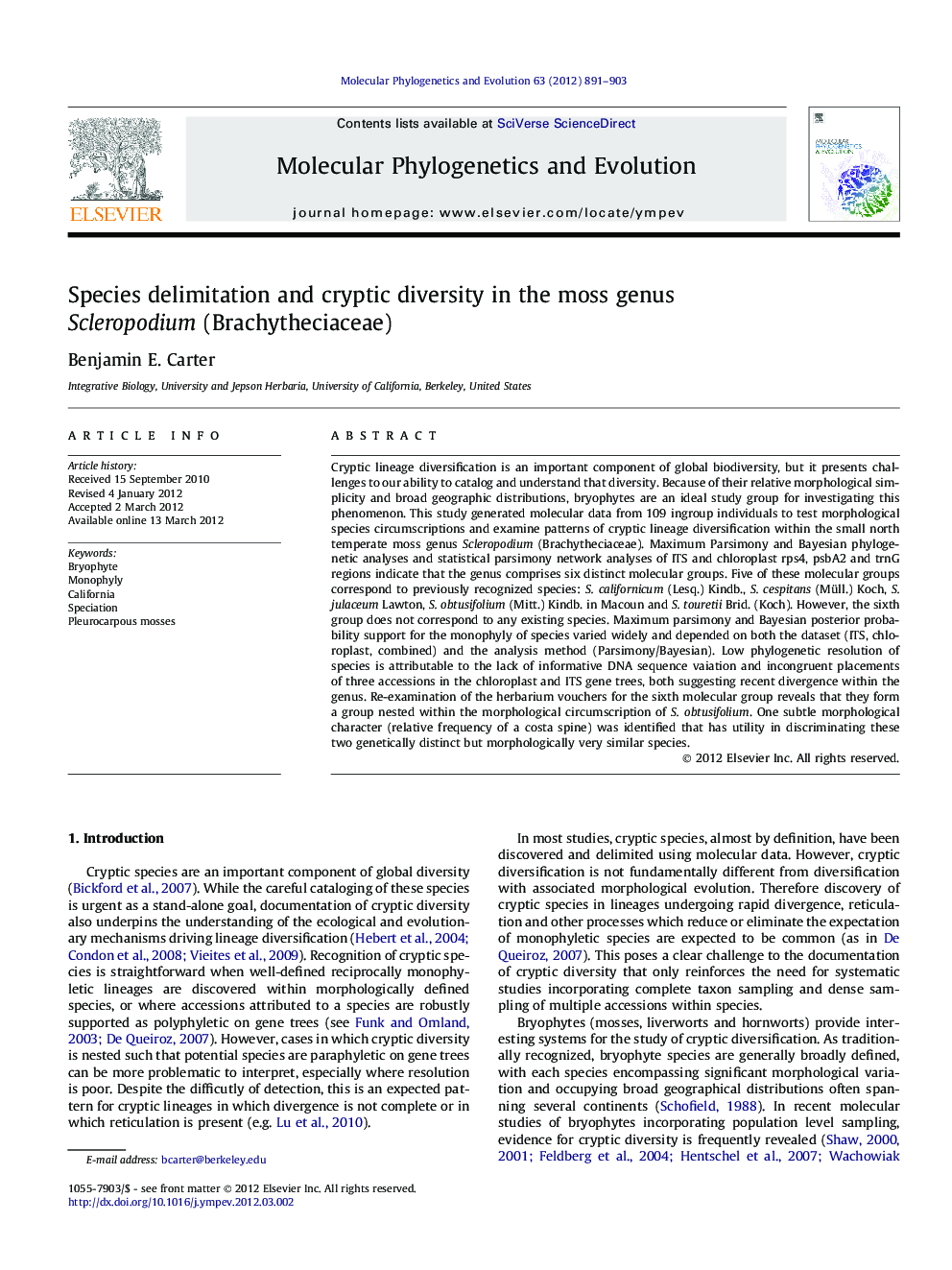| کد مقاله | کد نشریه | سال انتشار | مقاله انگلیسی | نسخه تمام متن |
|---|---|---|---|---|
| 2834152 | 1164292 | 2012 | 13 صفحه PDF | دانلود رایگان |

Cryptic lineage diversification is an important component of global biodiversity, but it presents challenges to our ability to catalog and understand that diversity. Because of their relative morphological simplicity and broad geographic distributions, bryophytes are an ideal study group for investigating this phenomenon. This study generated molecular data from 109 ingroup individuals to test morphological species circumscriptions and examine patterns of cryptic lineage diversification within the small north temperate moss genus Scleropodium (Brachytheciaceae). Maximum Parsimony and Bayesian phylogenetic analyses and statistical parsimony network analyses of ITS and chloroplast rps4, psbA2 and trnG regions indicate that the genus comprises six distinct molecular groups. Five of these molecular groups correspond to previously recognized species: S. californicum (Lesq.) Kindb., S. cespitans (Müll.) Koch, S. julaceum Lawton, S. obtusifolium (Mitt.) Kindb. in Macoun and S. touretii Brid. (Koch). However, the sixth group does not correspond to any existing species. Maximum parsimony and Bayesian posterior probability support for the monophyly of species varied widely and depended on both the dataset (ITS, chloroplast, combined) and the analysis method (Parsimony/Bayesian). Low phylogenetic resolution of species is attributable to the lack of informative DNA sequence vaiation and incongruent placements of three accessions in the chloroplast and ITS gene trees, both suggesting recent divergence within the genus. Re-examination of the herbarium vouchers for the sixth molecular group reveals that they form a group nested within the morphological circumscription of S. obtusifolium. One subtle morphological character (relative frequency of a costa spine) was identified that has utility in discriminating these two genetically distinct but morphologically very similar species.
Figure optionsDownload as PowerPoint slideHighlights
► Scleropodium (Brachytheciaceae; Musci) is a monophyletic genus.
► Molecular data strongly support the recognition of four traditionally defined species in the genus.
► Scleropodium cespitans is weakly supported due to divergence among New World and Old World populations.
► Scleropodium sp. B, an undescribed taxon related to S. obtusifolium, is revealed by molecular data.
► Phylogeographic signal in S. touretii is weak, but suggests recent divergence between New World and Old World populations.
Journal: Molecular Phylogenetics and Evolution - Volume 63, Issue 3, June 2012, Pages 891–903